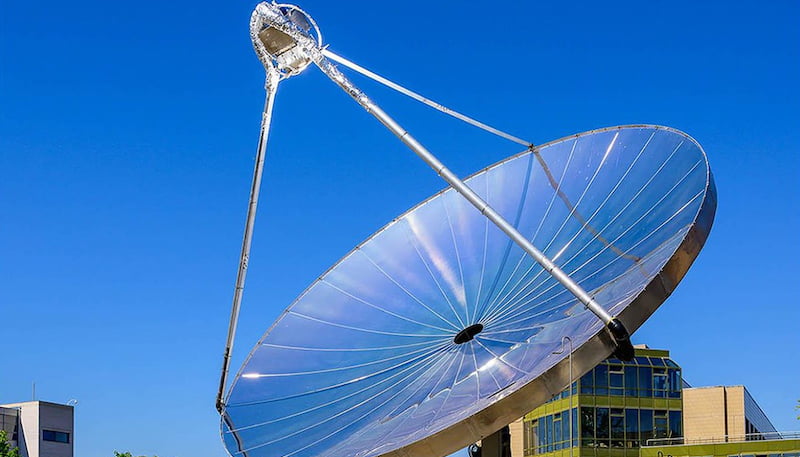
Researchers from Switzerland have apparently made a breakthrough. Because they developed a new type of solar power plant that can generate both hydrogen, heat and oxygen.
When it comes to the energy sources of the future, sustainable options are increasingly taking over. Against the background of climate change, this also seems necessary. In addition to solar systems and wind turbines, experts also see hydrogen as a future energy supplier. Researchers at the EPFL University in Switzerland have now made a breakthrough.
Because even if the combustion of hydrogen usually only produces water and oxygen, sustainable production continues to be complicated. With their new approach, the university team has now demonstrated that the solution could lie in the sun.
Solar power plant produces hydrogen by pooling energy
To do this, they developed a system that resembles a satellite dish and works in a similar way. During the day the sun shines on the bowl. This, in turn, bundles the energy and concentrates it on a small reactor that converts water into hydrogen, oxygen and heat. The bundling of the solar radiation meanwhile enables a thousandfold concentration.
A first pilot system achieved an output of one kilowatt. A further developed prototype already two kilowatts. Sophia Haussener, Head of the Laboratory for Science and Technology of Renewable Energies, speaks of a very high degree of efficiency without going into further detail.
Occurring oxygen as a by-product for the medical industry
The team sucked off the accumulating oxygen and used it further. Because producers often see this as a waste product – even if the medical industry were a possible customer. The system is suitable for industrial, commercial or private use.
The solar reactor could be used, for example, to generate enough energy for the heating and hot water supply of entire neighborhoods. With the current prototype, an output of around half a kilogram of hydrogen per day is possible. Extrapolated, this is enough to supply 1.5 hydrogen vehicles with fuel for one year. A four-person household in Switzerland could use it to heat for six months.
Also interesting:
Source: https://www.basicthinking.de/blog/2023/04/22/solarkraftwerk-wasserstoff/


